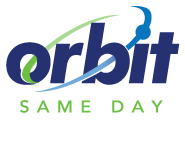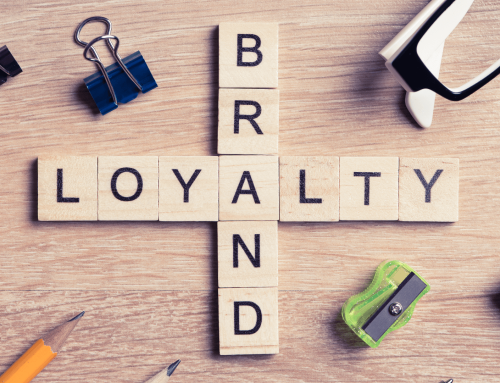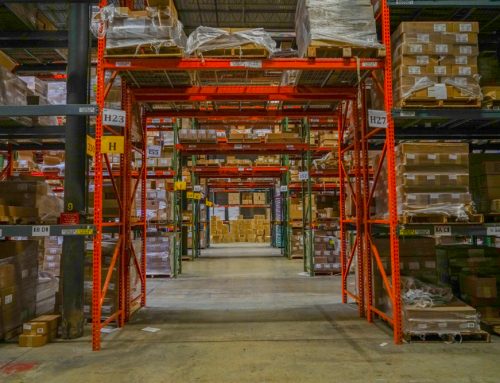If you’re in the manufacturing and production industries, chances are you’ve heard of kitting. Warehouse kitting is the process of taking multiple products under different SKUs and combining them under one single SKU. In manufacturing, it is essentially the same concept. Different but related parts are grouped specifically according to the unit they create. Think of the little Cookie in a Jar kits people pass out during the holidays. Everything you need to make cookies is neatly packaged in one little mason jar, right down to the instructions. Now, apply that same logic to warehousing for e-commerce or for manufacturing, and that’s kitting.
The process of kitting can simplify your sales process or manufacturing process in a few different ways. In this article, we’ll talk a little bit about both to help you understand how a company like Orbit Same Day can improve your company’s efficiency and sales metrics while lessening the load on your workforce. And this applies if you’re in manufacturing or e-commerce, so read on.
Manufacturing: Get Lean
If you’ve never heard of lean manufacturing, get ready for a super fast crash course. Here’s what you need to know:
The concept of lean manufacturing focuses streamlining production processes in a way that eliminates waste. The process was inspired by Toyota’s operating model in the 1930s. In 1996, James Womack and David Jones began defining the process and described it as “a way to do more and more with less – less human effort, less equipment, less time and less space – while coming closer and closer to providing customers exactly what they want.” Minimal waste with maximum efficiency—that’s the name of the game with lean manufacturing. This is accomplished through the implementation of five core principles: value, value stream, flow, pull and perfection.
- Value: The value principle refers to how value relates to the customer. Basically, the customer is going to be the entity defining value. What does that mean to producers? The producer has to understand the customer’s value of their product. Knowing what the value is from the customer’s perspective allows the producer to determine how much money a customer will pay and then work to reach the lowest cost for production, thus maximizing profit margins. This is achieved through eliminating waste, excess costs and processes that waste time. Time is, after all, money.
- The Value Stream: This principle focuses on examining each step of the production process. Whether or not this applies to the flow of information and ideas, the flow of inventory or the actual labor flow of the production of a product will vary from company to company. What matters is that each step is meticulously examined to eliminate waste. This is where you can zero in on those meetings that should be emails, unnecessary spending, ineffective product choices— anything not contributing to the value from the customer’s perspective should be eliminated.
- Flow: The flow principle aligns itself with removing any and all roadblocks in your production process. When you remove barriers and challenges in the production process, everything runs more smoothly. Think of it like you are steadily removing every traffic jam and roadblock on a street running directly through a city. For each red light that’s removed, each poorly designed merge lane, the cars traveling that road will move that much faster. The flow principle aims to create a fast, smooth road for production.
- Pull: There are two schools of thought regarding resource planning in manufacturing. One is to attempt to forecast the demand for the product being produced, which involves pre-ordering all of the production inventory needs. This leaves the potential for a large margin of error if forecasting is inaccurate. The other school of thought is the one that lean manufacturing aligns with, which is to pull. Under this school of thought, nothing is ordered until there is solid demand for the product or a pull for it. Waiting on true demand means saving money on miscalculated demand forecasts which eliminates unnecessary inventory stockpiling and unproductive scheduling. For the pull principle to work effectively, there has to be great communication in the company (relying heavily on the third principle of Flow.)
- Perfection: Also referred to as kaizen, this principle relates to the goal of continually seeking perfection. Under the perfection principle, companies should always be reevaluating their processes to seek further ways to eliminate waste and improve flow. In this age of speed and technology in which we live, re-evaluation is critical to stay relevant and keep your processes efficient. New technologies, applications, tools and machinery will always be just around the corner if you look for them.
Whether you choose to entirely become a Lean Manufacturer or not, there are points to this philosophy that are worth truly examining in order to cut costs and improve the value of your products.

Kitting in Manufacturing
Kitting in manufacturing takes all the pieces you need to create something and puts them together, but let’s go a little more in depth. Kitting fits intrinsically into the lean manufacturing processes because a kitting process organizes flow as well as the products themselves. Here’s a few ways kitting can save your company time and money, and why partnering with a warehousing company that can provide kitting services in addition to everything else that they offer is valuable.
- Improved Productivity: There’s a French phrase in the culinary industry, “mise en place.” It translates to “everything in its place.” The best chefs across the world put this phrase into practice by preparing everything they will need before they actually start cooking. It maximizes their efficiency to have everything washed, chopped, minced, measured, to have read the recipe, to have all of their utensils out and organized before they ever begin. Kitting in manufacturing is like mise en place for your company. It sets up your employees for the most success possible, with the least roadblocks. Employees don’t get bogged down searching for materials because everything is readily available.
- Better Management of Inventory: When you combine kitting with Orbit Same Day warehousing services, you get the added bonus of real-time inventory management. This allows you to constantly be aware of what is prepared for production and where your inventory may be weak, information that is crucial to a company’s success during peak times. It’s a major bonus that’s a standard piece of our warehousing services.
- Volume: Naturally, improved productivity will increase the volume you can produce. Fluctuations during high-demand seasons and the scaling of your business will all be met more easily.
- Floor Space: Kitting can decrease the floor space utilization while storing products. If you’re warehousing with Orbit Same Day, floor space isn’t something you need to stress about. However, kitting can also reduce the floor space of production once your items have been shipped to their assembly locations. Kitting will potentially reduce the costs of shipping, as well as the necessary packaging and the following waste for the deliverables.
Kitting in Retail and e-Commerce
So how does kitting apply in e-commerce? The ability to combine different products together under one SKU sort of opens up a gateway of possibilities for retailers.
- Gifts: Kitting several items together work spectacularly well during gift giving seasons. The cosmetics industry takes the cake on this type of retail kitting, with makeup and fragrance compilations lining department stores around America from Halloween until New Year’s. The draw comes from the perk of getting more product for less money. When that perceived value exists, more people want to buy.
- Fulfillment: Kitting in retail simplifies fulfillment and shipping costs because items are packaged together before and during delivery. It also decreased the margin of error in the shipping incorrect or missing items.
- Customization: When you examine merchandising, there is a trend of a growing desire for customizable goods. To use the cosmetics industry as another example of successful kitting, many makeup brands sell kits customizable to skin tones. This ingeniously sets a brand up to be viewed as a company that has “something for everyone,” increasing their perceived accessibility. Customized kitting could also be applied to monthly subscription boxes, like Bark Box, which sends a different selection of products to subscribers each month. The possibilities are endless.
Kitting is an amazing service you can offer your customers and clients that can boost your sales, especially around gift-giving holidays. Unfortunately, it is also a service that can potentially come with some major inventory challenges. Lucky for you, Orbit Same Day covers kitting. There’s no need to ponder the process of kitting in-house because Orbit Same Day has you covered. Get the perks of kitting and the highest POI by checking out what we have to offer and taking advantage of the logistical solutions we have readily available. For more information on how Orbit Same Day can save you time and money, and especially to see what kitting services could benefit your company, get a quote today.
Remember, time is money.
Warehousing spaces should provide more than just a place to store your product before it’s shipped. When your shipping, fulfillment, and warehousing services are all separate, you lose out on precious time while you try to communicate between the three branches. Orbit Same Day does it all, streamlining your business from warehouse to the same-day delivery Richmond of your final product.






